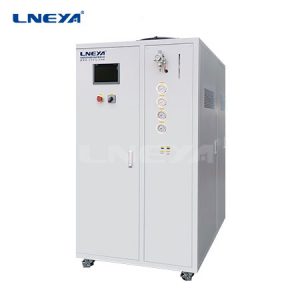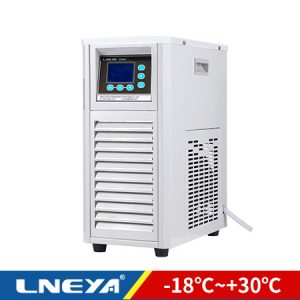原子炉温度制御
完璧な温度制御ソリューションについては、今すぐお問い合わせください。
The reactor is the main reaction equipment in the chemical synthesis API industry. The volume of the reactor is generally 0.5m³ ~ 8m³, and its production mode is mostly intermittent production. A variety of organic reactions are involved in the drug synthesis process. These reactions can be divided into endothermic reactions and exothermic reactions. The exothermic reactions can be divided into instant exothermic reactions, fast exothermic reactions and slow exothermic reactions. Maintain the reaction. Stable process temperature is an important prerequisite for ensuring reaction safety, product quality, and high yield.
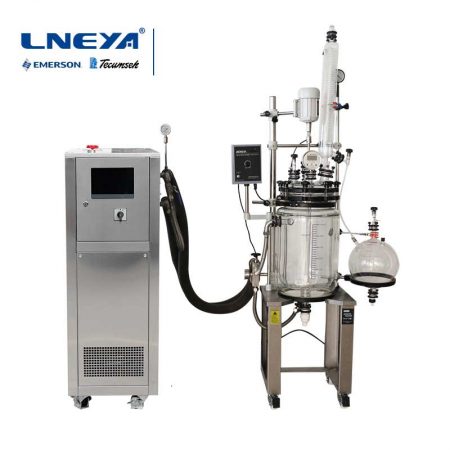
The temperature control process of the batch reactor is mainly divided into the following stages:
1. Early stage of reaction: raise or lower the temperature to the required reaction temperature.
2. Reaction process: Generally, it is a constant temperature reaction, which keeps the reaction temperature constant at a certain set value. For a multifunctional intermittent reactor, the reactions carried out are different each time, so the heat needs to be removed or supplied. Uncertainty. In order to meet the reaction needs, the temperature control requirements of this process need to be fully considered. If the temperature control is unstable, it will easily lead to a decrease in the yield and quality of the product. What’s more, it may lead to local over-temperature reactions and cause safety accidents. Therefore, whether the temperature control is stable at this stage is crucial to the safety of the reaction and the quality of the product.
3. End of reaction: Generally, it is also necessary to cool down or raise the temperature to a specified temperature. In the production process, there are strict time regulations for the intermittent reactor from the beginning of heating to the final cooling. It is generally required to conduct the reaction system according to a certain rising/lowering rate. Temperature raising/lowering operation has high requirements on the calculation of heat transfer in intermittent reactors and the selection of temperature control methods.
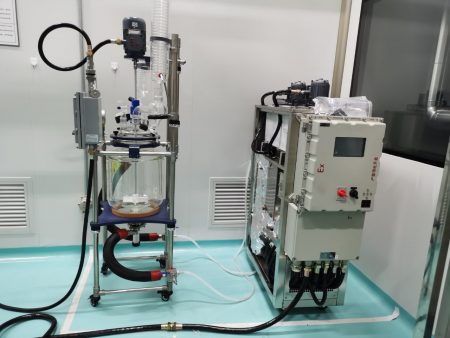
Future Prospects for Reactor Temperature Control Systems
1. Although a single TCU system has high temperature control accuracy for slow exothermic reactions, it is large in size and high in cost. Hybrid control systems have the characteristics of high flexibility, high temperature control accuracy, low cost, and good integration, and are gradually becoming mainstream.
2. Develop an intelligent temperature control system: The existing temperature control system only requires the operator to input the temperature control requirements and then the control system controls the temperature according to the input requirements. For some slow reactions, this mode can still cope with it, but for some Fast response cannot achieve good results. The reason is that the control process only controls it simply in the dimension of the control principle. At most, some complex control strategies such as cascade control, split-range control, etc. are added. There is no integration of control, process, and equipment. Come together organically.
3. Future intelligent temperature control systems should also include the following modules
① Equipment expert system: includes heat and mass transfer characteristics of different stirrings, heat transfer characteristics of reactor walls, reactor characteristics database, etc.;
② Process reaction exotherm expert system: includes exothermic curve databases for different reaction types, reaction exothermic curve databases for different products, heat transfer databases for different solvents, etc.;
③ Automatic control strategy selection expert system: includes selection guides for various control strategies for intermittent reactions, system identification systems, etc.
The above three systems + hardware together form an intelligent temperature control system. The operator only needs to select the reaction type, reaction medium, etc., and the system will select the appropriate control strategy based on the input reaction conditions and the current equipment conditions, and perform system identification in real time. Adjust the control strategy to achieve self-identification and self-adaptation of the temperature control system to achieve precise temperature control.
温度制御システムの設計から製造まで一貫して行います。標準モデルから完全なカスタマイズ製品まで 900 .私たちはカスタマーサービスに特化し、お客様一人ひとりのニーズに合った最適な温度制御システムを提供することに専念しています。
私達は標準外カスタマイズされた解決を提供します。単一の冷却のスリラーおよび冷却及び暖房のコンボの単位は両方利用できます。
Eメール lilia@lneya.com WeChat ID: +8615251628237 WhatsApp: +86 17851209193

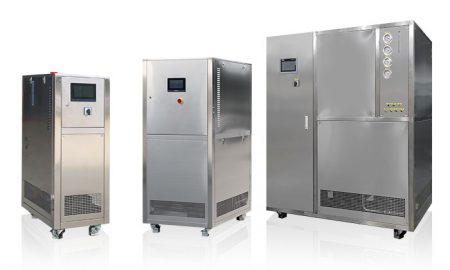
冷暖房システム (SUNDIシリーズ)
- 温度範囲:-120℃〜+350
- 高精度でインテリジェントな温度制御
- 冷却能力:0.5kW~1200kW
- 熱流体の寿命を延ばす完全密閉システム
- 各装置は12時間以上の負荷テストを実施
| 温度範囲 | -10 ~ +150℃シリーズ | -25 ~ +200℃シリーズ | -25 ~ +300℃シリーズ | -45 ~ +250°C シリーズ | -45 ~ +300℃シリーズ | -60 ~ +250°C シリーズ | -60 ~ +300℃シリーズ | -70 ~ +250°C シリーズ | -80 ~ +250°C シリーズ | -90 ~ +250°C シリーズ | -100 ~ +100℃シリーズ | ||
| 冷却能力 | 1.5 ~ 15kW | 1~200kW | 1~200kW | 0.45~200kW | 0.9 ~ 25kW | 0.25 ~ 60kW | 0.75 ~ 25kW | 0.4 ~ 15kW | 0.3 ~ 80kW | 0.2 ~ 80kW | 0.45 ~ 80kW | ||
| 注: -150℃の~ +350℃からの温度較差および冷却容量はカスタマイズすることができる | |||||||||||||
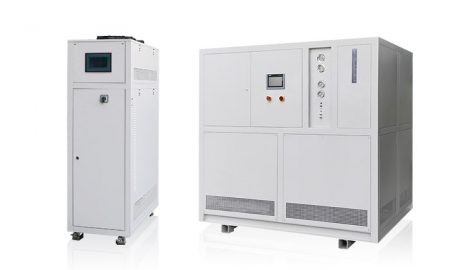
冷暖房システム(WTDシリーズ)
- (マイクロチャンネル・チューブリアクター特化型)
- 温度範囲:-70℃〜+300
- 高性能循環ポンプ、より安定した温度制御効果
- 幅広い温度範囲で、より多くの業界のニーズに対応
- 各装置は12時間以上の負荷テストを実施
| 温度範囲 | -70°C ~ +300°C | -45°C ~ +250°C | -70°C ~ +200°C | ||||||
| 冷却能力 | 1.1 ~ 7.5kW | 1.5 ~ 5.5kW | 11~50kW | ||||||
| 注: -150℃の~ +350℃からの温度較差および冷却容量はカスタマイズすることができる | |||||||||
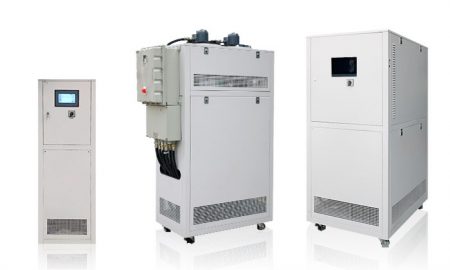
冷暖房サーキュレーター
- 温度範囲:-45℃〜+250
- エマソンのコープランドコンプレッサー、信頼できる品質
- 自己診断機能、複数の安全保護装置
- 熱流体の寿命を延ばす完全密閉システム
- 各装置は12時間以上の負荷テストを実施
| 温度範囲 | -25°C ~ +200°Cシリーズ | -45°C ~ +250°C シリーズ | |||||||
| 冷却能力 | 1 ~ 15kW | 0.25 ~ 15kW | |||||||
| 注: -150℃の~ +350℃からの温度較差および冷却容量はカスタマイズすることができる | |||||||||
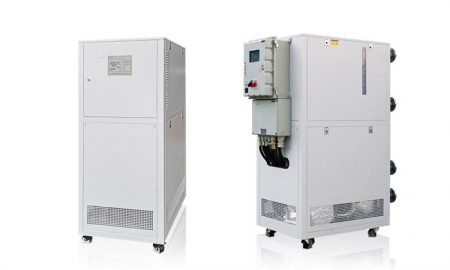
加熱サーキュレーター
- 温度範囲+50℃ ~ +300℃
- 熱交換面積が大きく、加熱速度が速い
- 自己診断機能、複数の安全保護装置
- クローズド循環システム、高温時のオイルミストなし
- 各装置は12時間以上の負荷テストを実施
| 温度範囲 | +50°C ~ +170°C(UCシリーズ) | +50°C ~ +300°C(UCシリーズ) | +50°C ~ +300°C(USTシリーズ) | ||||||
| 暖房能力 | 5.5 ~ 15kW | 3.5~130kW | 3.5〜95kW | ||||||
| 注: -150℃の~ +350℃からの温度較差および冷却容量はカスタマイズすることができる | |||||||||
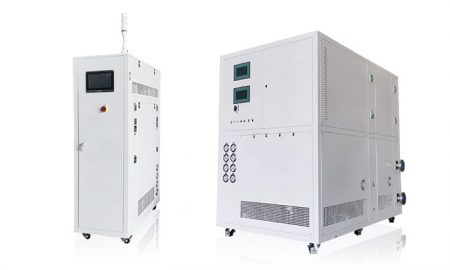
TESシリーズ(燃料・油試験用温度制御装置)
- 温度範囲:-85℃〜+250
- シーメンスPLCコントローラおよびその他のブランドアクセサリー
- 自己診断機能、複数の安全保護装置
- 完全密閉式循環システムにより、高温時のオイルミスト発生なし
- 各装置は12時間以上の負荷テストを実施
| 温度範囲 | -45°C ~ +250°C シリーズ | -85°C ~ +200°Cシリーズ | -60°C ~ +200°Cシリーズ | ||||||
| 冷却能力 | 0.3 ~ 25kW | 0.25 ~ 25kW | 3〜60kW | ||||||
| 注: -150℃の~ +350℃からの温度較差および冷却容量はカスタマイズすることができる | |||||||||
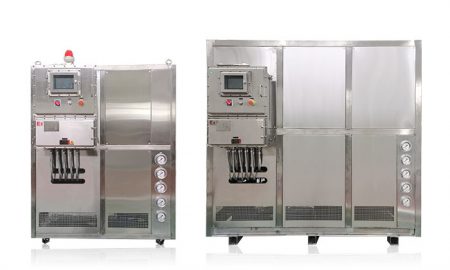
TCU マルチリアクター温度制御システム
- 温度範囲:-120℃〜+250
- 密閉された再現可能な温度制御
- 電気暖房熱油補助システム内蔵
- ニーズに応じて冷熱・熱源熱交換モジュールを追加する
- 各装置は12時間以上の負荷テストを実施
| 温度範囲 | -45°C ~ +250°C シリーズ | -120°C ~ +250°Cシリーズ | カスタマイズされた温度制御システム | RT+10°C ~ +135°C | |||||
| 暖房能力 | 25~80kW | 25~80kW | カスタム | 25~300kW | |||||
| 注: -150℃の~ +350℃からの温度較差および冷却容量はカスタマイズすることができる | |||||||||
 LNEYA
LNEYA
 简体中文
简体中文














































































